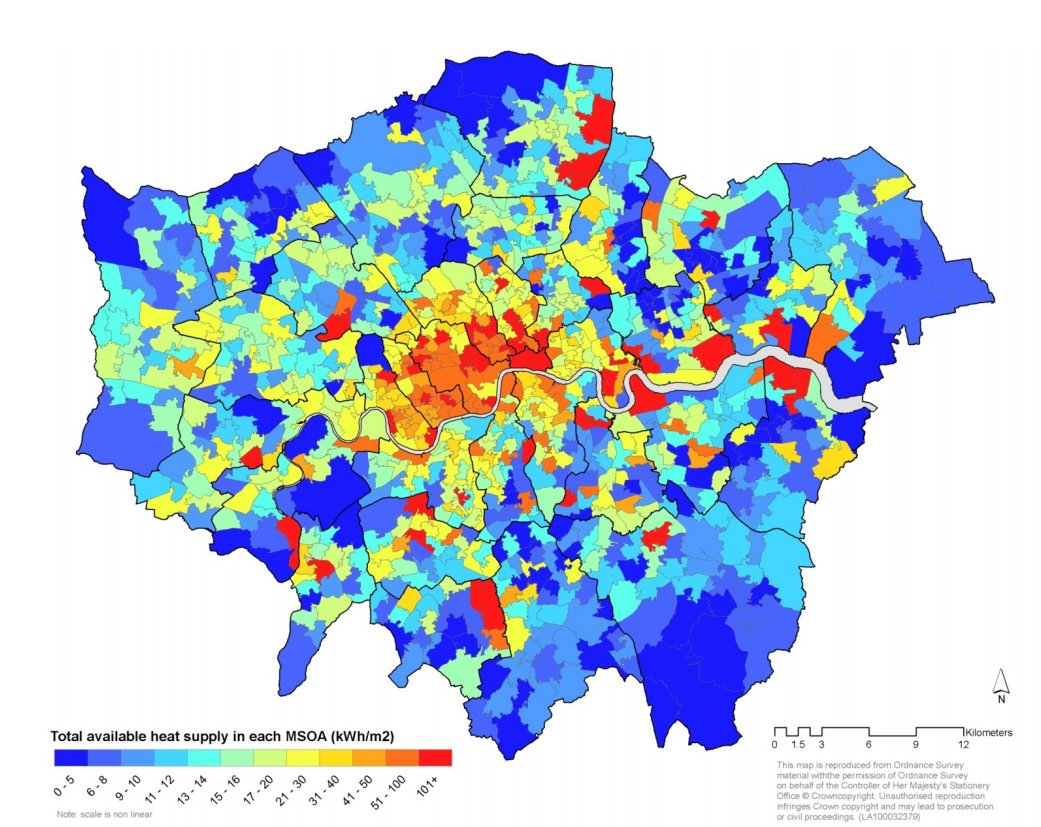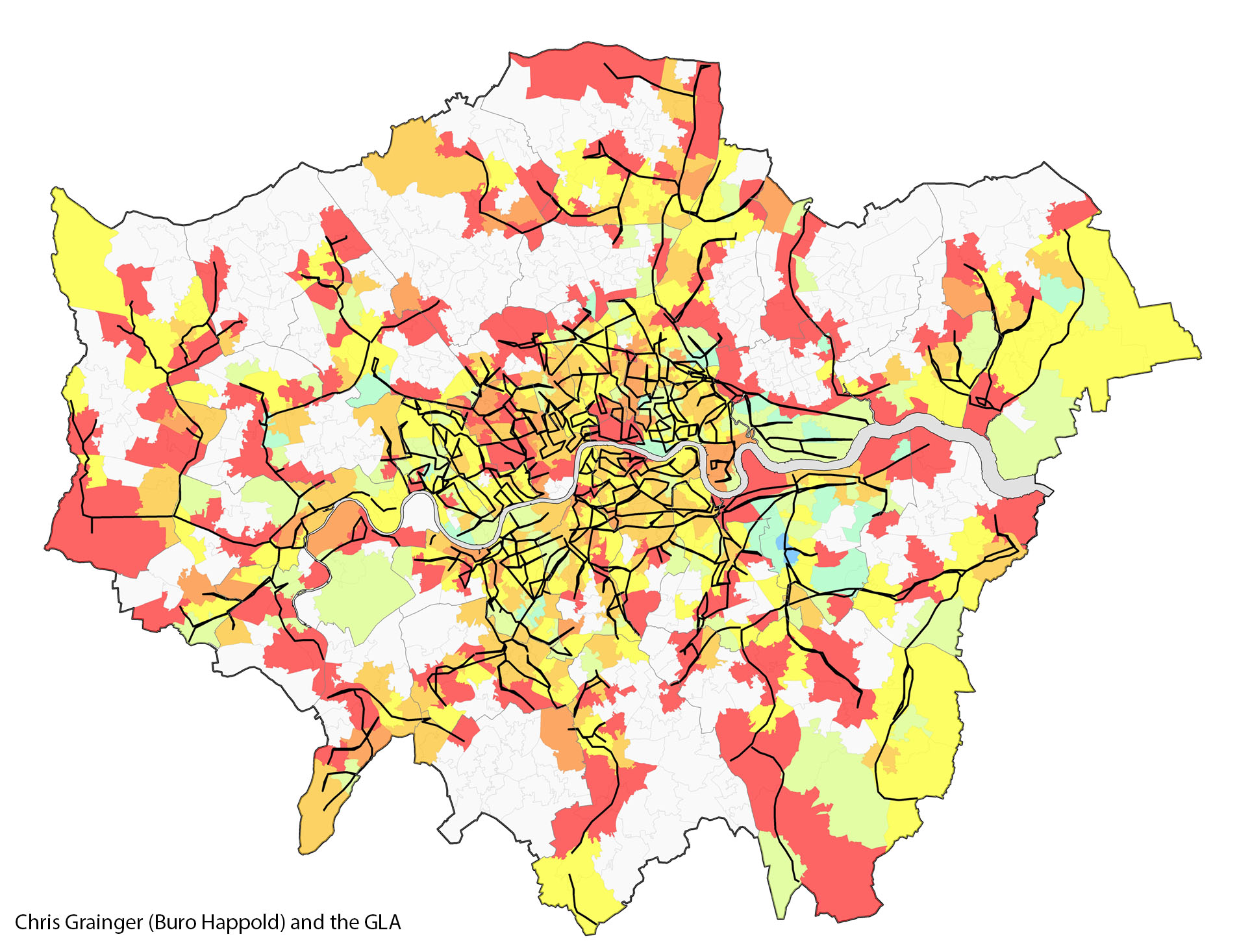A huge amount of energy is wasted each year in London as heat escapes from our buildings in winter or is pumped out from air conditioners in the summer. In a bid to look into the ways that London can be made more sustainable, the GLA have just published a report that identifies the parts of the capital where this wasted heat can be converted into useful energy. As the map above shows, the City and West-End rank among the areas with the greatest potential to recycle energy currently wasted. We have produced an interactive version here. There are other areas too that have large supplies of untapped energy that is either emitted from sewers – shown in the map below – or from industrial sources.
Thanks to Chris Grainger of Buro Happold for sending over the maps. You can download the data used to to create them here.
As an addendum (thanks to Roberto Gagliardi la Gala for the extra information) there is a similar work that has been carried out in 2009: the GLA (former LDA) launched the London Heat Map – which links to an interactive GIS map (registration needed to access full functionalities) – in order to show heat consumption data, heat supply potential and opportunities for Decentralised Energy plants.



Informative map with stunning information – the center of London is the biggest energy waster. It is probably caused by many old houses which need to be renovated.
Hello, the biggest waster of energy is in the City of London (where there are many office buildings). All the areas where there are factories (or disused) are also some of the biggest consumers.
I live in a Victorian Industrial dwelling-but many of us occupants don’t consume vast amounts of energy!
How can Contact Chris Grainger? I want to contact him about the data used in constructing the data mentioned as downloa data weblink below statment is not working.
(Thanks to Chris Grainger of Buro Happold for sending over the maps. You can download the data used to to create them here.)